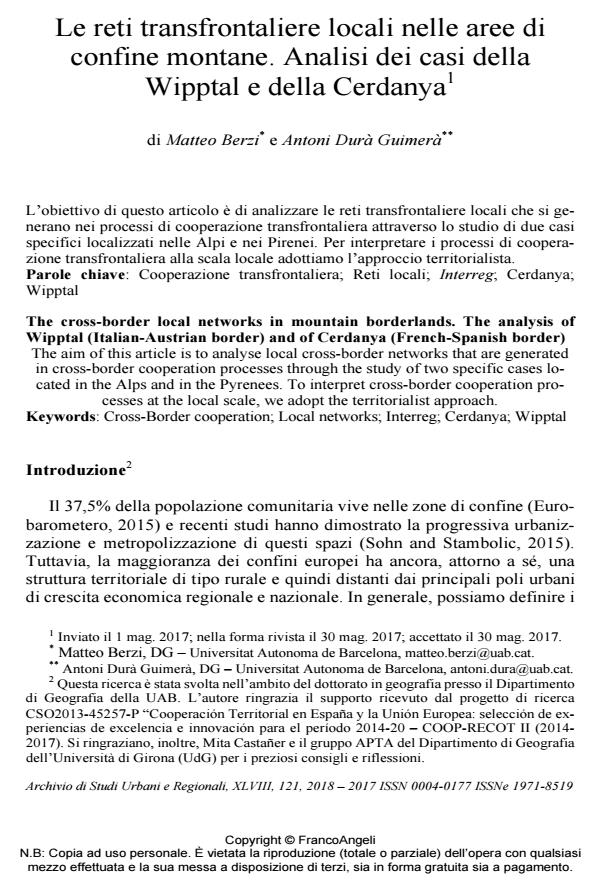The cross-border local networks in mountain borderlands. The analysis of Wipptal (Italian-Austrian border) and of Cerdanya (French-Spanish border)
Journal title ARCHIVIO DI STUDI URBANI E REGIONALI
Author/s Matteo Berzi, Antoni Durà Guimerà
Publishing Year 2018 Issue 2018/121
Language Italian Pages 23 P. 73-95 File size 449 KB
DOI 10.3280/ASUR2018-121004
DOI is like a bar code for intellectual property: to have more infomation
click here
Below, you can see the article first page
If you want to buy this article in PDF format, you can do it, following the instructions to buy download credits

FrancoAngeli is member of Publishers International Linking Association, Inc (PILA), a not-for-profit association which run the CrossRef service enabling links to and from online scholarly content.
The aim of this article is to analyse local cross-border networks that are generated in cross-border cooperation processes through the study of two specific cases lo-cated in the Alps and in the Pyrenees. To interpret cross-border cooperation pro-cesses at the local scale, we adopt the territorialist approach.
Keywords: Cross-Border cooperation; Local networks; Interreg; Cerdanya; Wipptal
Matteo Berzi, Antoni Durà Guimerà, Le reti transfrontaliere locali nelle aree di confine montane. Analisi dei casi della Wipptal e della Cerdanya in "ARCHIVIO DI STUDI URBANI E REGIONALI" 121/2018, pp 73-95, DOI: 10.3280/ASUR2018-121004